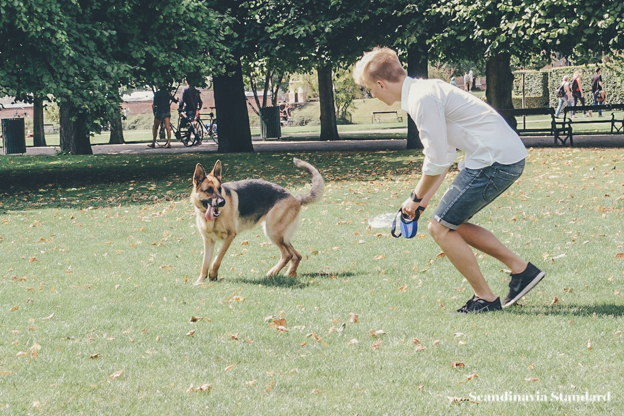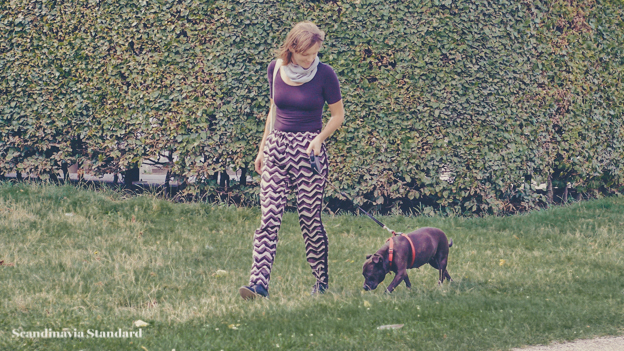Pet ownership in Denmark has been on the rise for years, even during times of economic downturn. Maybe that’s because we no longer see pets as luxuries (or workers) but rather as additions to our families. As a result, pet care is more important than ever. Want to know how to travel with your cat? Where to board your dog while you’re away? Who to go to when your gerbil has a cough? We’ve got your answers! So: sit. Stay. Read.
Bringing an animal into Denmark – Cats, Dogs, Ferrets
Moving with a pet can be vaguely traumatic for both the pet and the owner. Here are the guidelines for how to make it go as smoothly as possible.
Denmark is a member of the Pet Travel Scheme (“PETS”), of which the UK, European Union countries, United States, Canada, New Zealand and Australia are also members. This means that, if the pet (cat, dog or ferret) meets the PETS requirements, it can enter Denmark without quarantine. The requirements are:
![]() The pet must have an ID; either a microchip or a tattoo.
The pet must have an ID; either a microchip or a tattoo.
![]() The pet must have an up-to-date rabies vaccination.
The pet must have an up-to-date rabies vaccination.
![]() The pet must have a PETS Passport with the microchip number or tattoo number on the passport. These are issued by a veterinarian in your home country and should also include the date of the rabies vaccination.
The pet must have a PETS Passport with the microchip number or tattoo number on the passport. These are issued by a veterinarian in your home country and should also include the date of the rabies vaccination.
![]() The pet should be treated for ticks and fleas 24 hours before departure.
The pet should be treated for ticks and fleas 24 hours before departure.
![]() These guidelines are only valid for up to five cats, dogs and/or ferrets.
These guidelines are only valid for up to five cats, dogs and/or ferrets.
Danish Veterinary and Food Administration notes:
“It is very important that the date of identification is prior to or the same as the first rabies vaccination date, which is entered into the EU Pet passport. If the date of identification is later than the date of the rabies vaccination, the EU Pet passport is not considered valid and the transport is considered illegal.”
Bringing Birds into Denmark
Birds can be brought into Denmark without a veterinary certificate from EU Member States and Andorra, Croatia, Faeroe Islands, Greenland, Iceland, Liechtenstein, Monaco, Norway, San Marino, Switzerland and Vatican City State. If you are not traveling from one of these countries and would like to bring up to five live birds into Denmark, the birds must:
![]() Have undergone a 30 days pre-export isolation at the place of departure in a third country
Have undergone a 30 days pre-export isolation at the place of departure in a third country
 or
or
![]() Be subjected to a 30 days post-import quarantine in the Member State of destination
Be subjected to a 30 days post-import quarantine in the Member State of destination
 or
or
![]() Have been vaccinated and at least on one occasion revaccinated within the last 6 months and not later than 60 days prior to dispatch against avian influenza using an H5 vaccine approved for the species concerned,
Have been vaccinated and at least on one occasion revaccinated within the last 6 months and not later than 60 days prior to dispatch against avian influenza using an H5 vaccine approved for the species concerned,
 or
or
![]() Have been isolated for at least 10 days prior to export and have been subjected to a test for the detection of H5N1 antigen or genome, carried out on a sample taken not earlier than on the third day of isolation.
Have been isolated for at least 10 days prior to export and have been subjected to a test for the detection of H5N1 antigen or genome, carried out on a sample taken not earlier than on the third day of isolation.
Pet birds meeting the above mentioned requirements must be accompanied by a Veterinary Certificate, a declaration by the owner, and must go through special customs post at the airport. Both Veterinary Certificate and Declaration Certificates can be downloaded at here.
Please note that these guidelines exclude poultry (for those of you trying to bring chickens into Denmark).
Before you come to Denmark
Make sure to contact the Danish Veterinary and Food Administration Control Office to inform them you will be coming and to make sure that no rules or laws have changed regarding your specific pet. This will cut down on your confusion and most likely make things go smoothly from your home airport to Copehagen.
⇢ Danish Veterinary and Food Administration Head Office
Tel: +45 72 27 69 00
E-mail: [email protected]
Around the City
Remember to keep your dog on a leash while walking in the city and pick up after your dog! There are plenty of parks throughout the greater Copenhagen area where you can take your dog off the lease and let him run around, including special dog parks/areas. Most cats in the city are kept indoors but some people do let their cats outside during the days.

Veterinarians
Due to the high number of pets in Copenhagen, excellent veterinary facilities are available citywide. As is true with most professional people in Copenhagen, there should be no problem with using English at any of these places.
⇢ Centrum Dyreklink
Istegade 91, København V
⇢ Kobenhavns Dyrehospital
Poppelstykket 11, København SV
⇢ Dyreklinikken Ryesgade
Ryesgade 100, København N
⇢ City Dyreklink
Kronprinsessegade 76, Købehnavn K
Kennels
If you find that you have to leave your dog or cat for a period of time, don’t feel bad about depositing them into one of these swanky pet-hotels (can you imagine how cute a REAL pet hotel would be?! Kitty bell-boys!). Make sure dogs are vaccinated before stowing them away! In addition, if your dog or cat is not neutered/spayed and will be in heat during the time they are in the kennel, make sure to tell the kennel, as the animal may need to have birth control injections/pills. Most kennels in Denmark do not have pick-up services, so be sure to ask, and be ready to have to schlep your animal there yourself.
⇢ Måløv Hundepension
Kalveholmvej 6, 3660 Stenløse
This kennel is located slightly outside of the city but is easily accessible by transport. The kennel is spacious, with plenty of outdoor room to run around. Unlike some other kennels, they will take in dogs when they are sick or must adhere to special diets.
⇢ Vejlegårdens Hunde og Kattepension
Jungshøjvej 18, 2760 Måløv
For cats and dogs both, this kennel’s sprawling grounds mean they’ll never want for fresh air. Just 20 minute outside of the city, you can be sure your pet is in good hands.
⇢ Birkemose Hunde og Kattepension
Harreshøjvej 24, 3080 Tikøb
This cat and dog kennel is located outside of the city but is accessible by public transport. Their easy-to-use booking system allows you to reserve a space online (in English!) in minutes. They can be a bit picky about sick animals, so make sure you tell them about any issues your dog or cat may have.
Photographs by Josef Brock.

